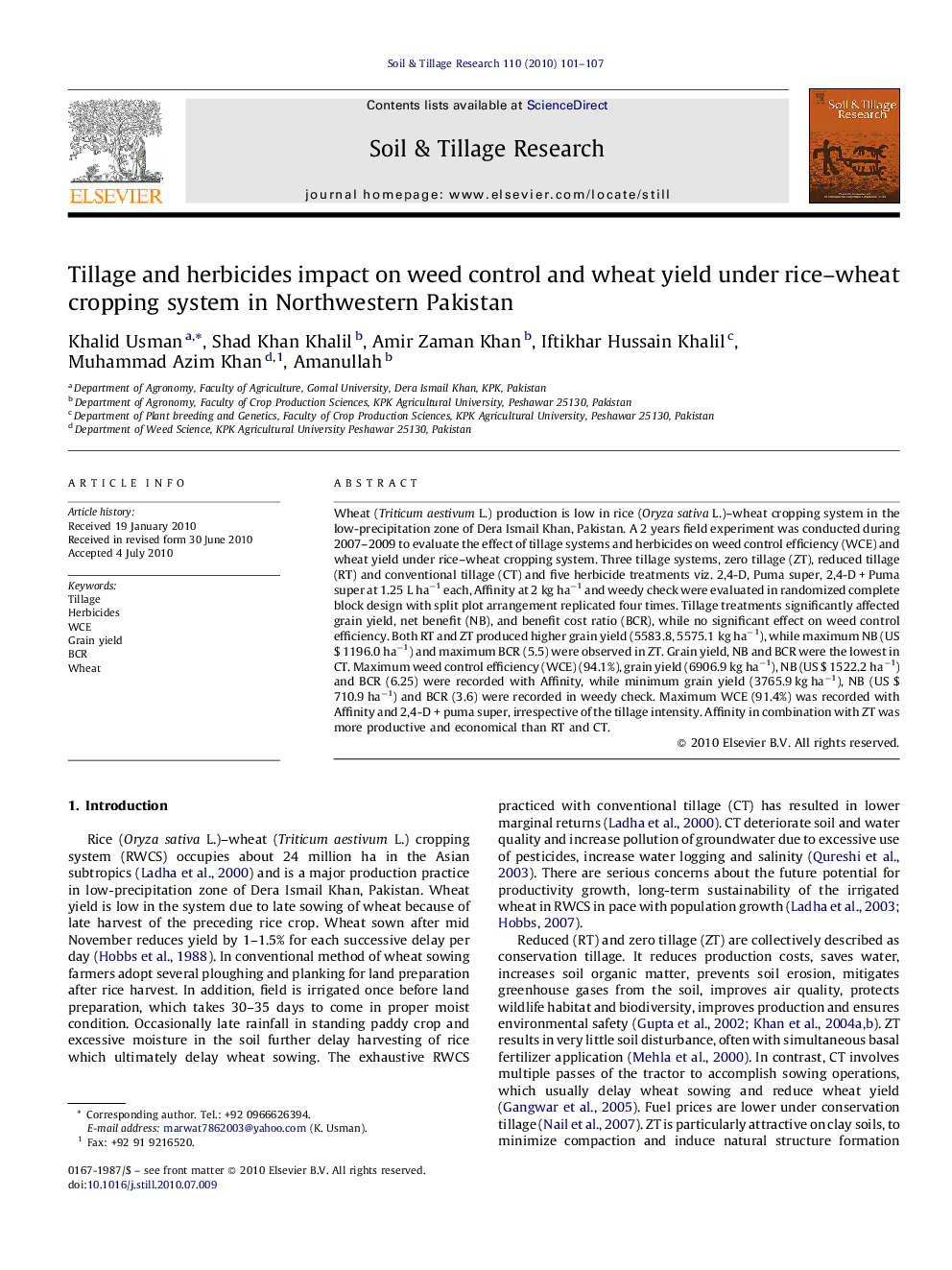| Article ID | Journal | Published Year | Pages | File Type |
|---|---|---|---|---|
| 306186 | Soil and Tillage Research | 2010 | 7 Pages |
Wheat (Triticum aestivum L.) production is low in rice (Oryza sativa L.)–wheat cropping system in the low-precipitation zone of Dera Ismail Khan, Pakistan. A 2 years field experiment was conducted during 2007–2009 to evaluate the effect of tillage systems and herbicides on weed control efficiency (WCE) and wheat yield under rice–wheat cropping system. Three tillage systems, zero tillage (ZT), reduced tillage (RT) and conventional tillage (CT) and five herbicide treatments viz. 2,4-D, Puma super, 2,4-D + Puma super at 1.25 L ha−1 each, Affinity at 2 kg ha−1 and weedy check were evaluated in randomized complete block design with split plot arrangement replicated four times. Tillage treatments significantly affected grain yield, net benefit (NB), and benefit cost ratio (BCR), while no significant effect on weed control efficiency. Both RT and ZT produced higher grain yield (5583.8, 5575.1 kg ha−1), while maximum NB (US $ 1196.0 ha−1) and maximum BCR (5.5) were observed in ZT. Grain yield, NB and BCR were the lowest in CT. Maximum weed control efficiency (WCE) (94.1%), grain yield (6906.9 kg ha−1), NB (US $ 1522.2 ha−1) and BCR (6.25) were recorded with Affinity, while minimum grain yield (3765.9 kg ha−1), NB (US $ 710.9 ha−1) and BCR (3.6) were recorded in weedy check. Maximum WCE (91.4%) was recorded with Affinity and 2,4-D + puma super, irrespective of the tillage intensity. Affinity in combination with ZT was more productive and economical than RT and CT.
